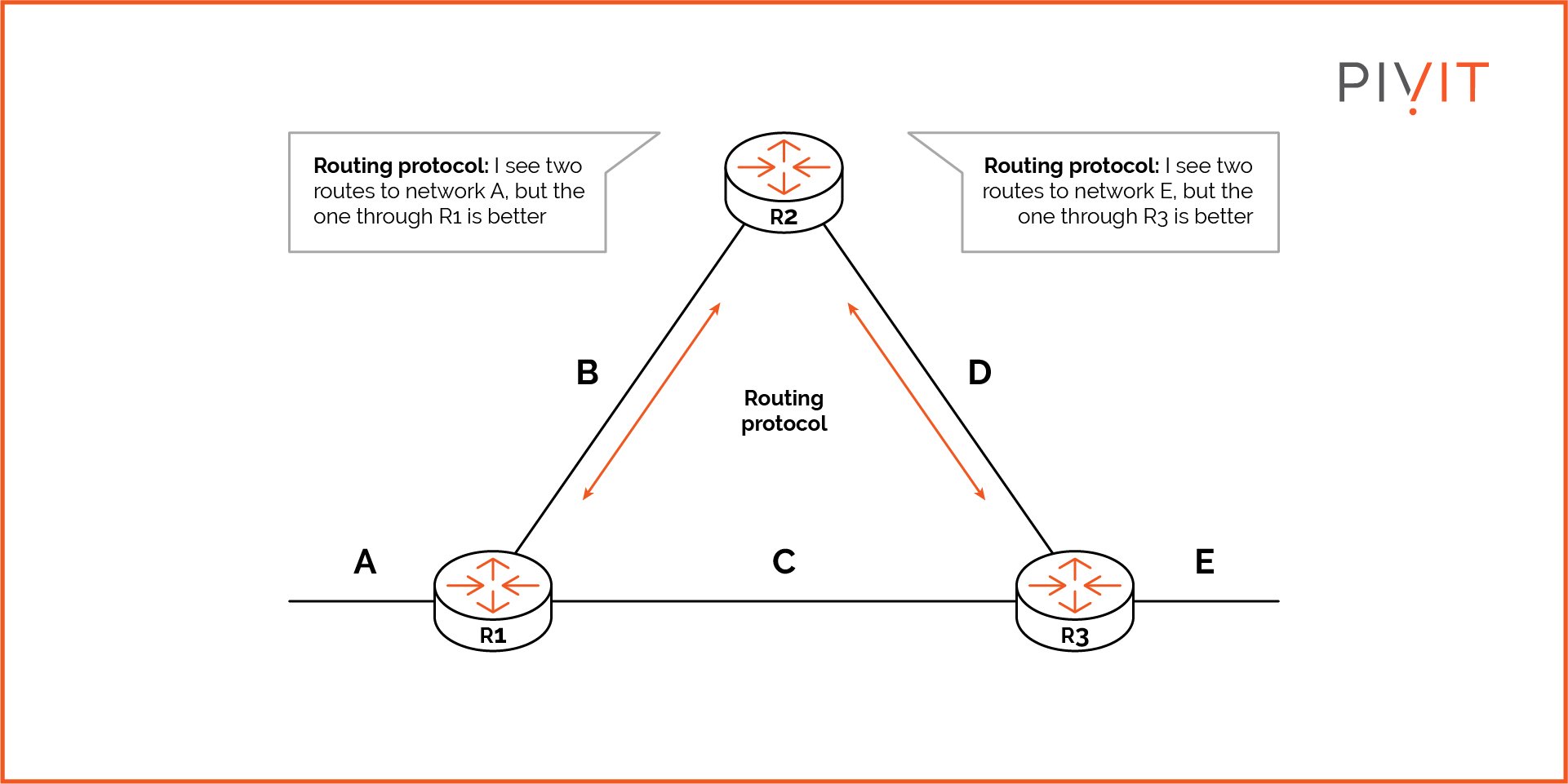Introduction to Dynamic Routing
Dynamic routing is essential for maintaining uninterrupted network connectivity and gaining a comprehensive understanding of the network topology. Static routing may be more suitable for networks with point-to-point or hub-and-spoke topologies. However, for all other network types and sizes (including small, medium, and large networks), implementing a routing protocol is a key element for proper network functioning.
At the same time, dynamic routing has many advantages over static routing, especially in medium to large networks. It automatically decides which routes are best according to the algorithm and metrics used and applies those in the routing table. Lastly, it enables the router to know what to do in every situation when an active route in the routing table fails.
Dynamic Routing: An In-depth Overview
The foundation of a dynamic routing protocol is an algorithm that performs various processes in the background to exchange network information through updates between the participating routers to learn about remote networks. The routing algorithm is responsible for identifying the best path between various segments in the network and constantly updating the routing table with the most recent network changes.

Several routing protocols are available, such as RIP, EIGRP, OSPF, IS-IS, and BGP. Remember that choosing the ideal protocol for your network is a crucial decision. The selection process is complex and depends on various factors, such as network size, topology, presence of redundant links and equipment, running applications, and other related criteria that are significant for protocol selection.
The most beneficial aspect of utilizing a dynamic routing protocol in a computer network is that the administrator only needs to activate it on the routers. From that moment, it begins learning routes and performing appropriate updates when necessary, without any need for human interaction.
At the same time, routing protocols provide some downsides as well. The routing protocols require a constant allocation of resources, such as CPU, memory, and bandwidth, to maintain continuous functioning.
Therefore, you should always be certain that the routers (also firewalls and Layer 3 switches) running the routing protocols have enough hardware resources at their disposal at any time. While rarely problematic in modern networks, the bandwidth overhead can be a concern in certain instances, especially when low-bandwidth links connect routers.
Important: Never misunderstand a “routing” protocol for a “routed” protocol. Although these two terms sound very similar to each other, they represent different things. Routing protocols such as OSPF or EIGRP exchange routing information between routers, allowing them to learn about networks in the routing domain.
On the other hand, routed protocols such as IPv4 and IPv6 refer to a protocol that defines a packet structure and logical addressing. This is a protocol that is responsible for transferring data packets between different segments of the networks previously learned by a routing protocol.